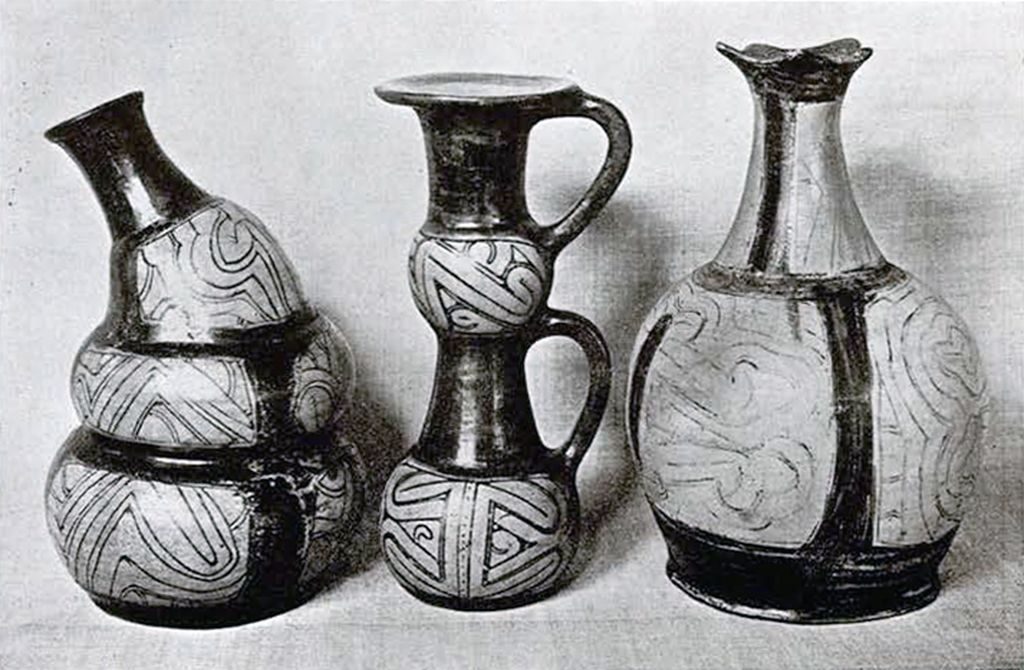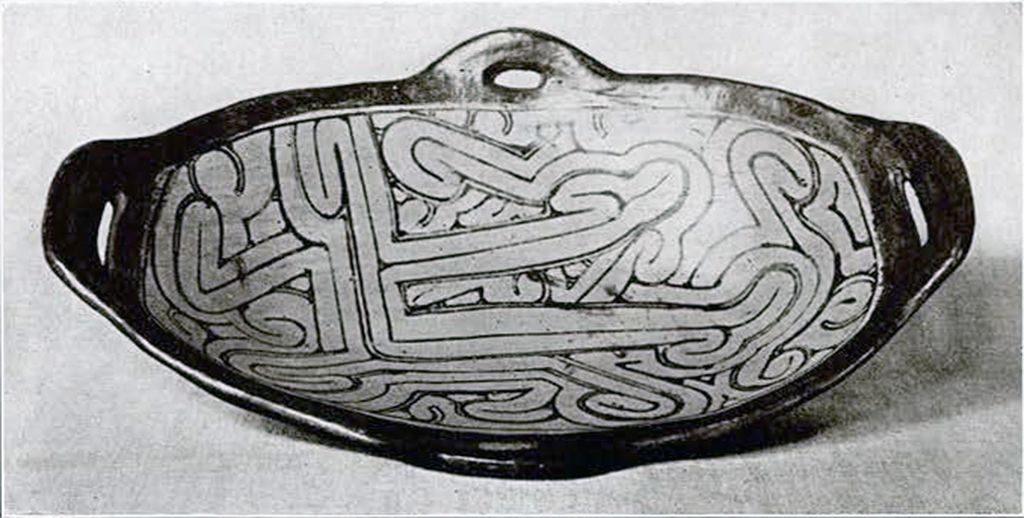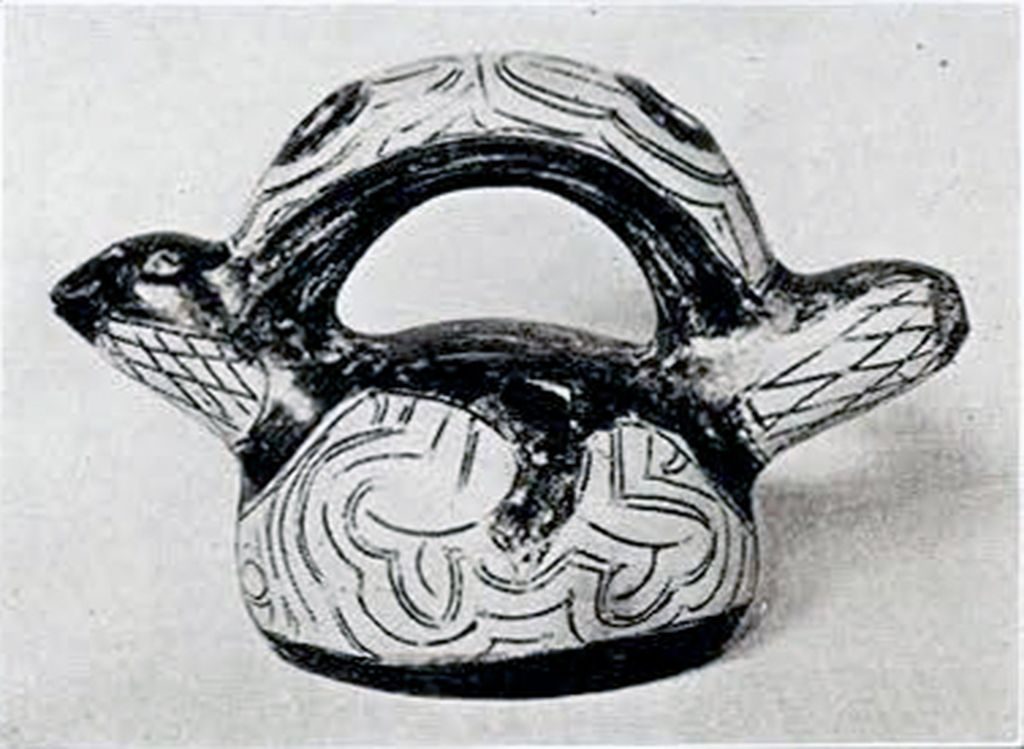There have been many changes in Dutch Guiana since 1498, when Columbus first saw its shores. White pirates, explorers seeking the fabulous El Dorado, adventurers, and traders came. Settlements were established with great difficulty and large plantations were developed, especially by the Hebrews. Dutch, French, English and Spanish contended for the country which was finally assured to the Dutch by the English in exchange for New York City by the treaty of Brida in 1667. After the Dutch gained control, the Indians were completely conquered and then granted the best possible terms of peace. The whites were not to enslave the natives but could purchase their prisoners of war. The Indians were thus encouraged to fight among themselves and take prisoners to sell. Negro slaves were introduced at an early time but many of them ran away or rebelled and gained their freedom. These reverted to their former African customs and adopted from the Indians others necessitated by their new environment. Villages of these “Bush Negroes” occur along the borders of the white settlements. Still further in the interior, are the Indians who, being unable to compete or even coexist with the blacks, have rapidly diminished in numbers.

Museum Object Numbers: SA1137 / SA1139
Image Number: 20834
In the upper reaches of the Maroni River on the Dutch side are several Indian villages whose inhabitants still retain many of their original customs and are in as primitive state of culture as they were three centuries ago. Among the women the main domestic art is that of pottery making. While this art has been influenced by the newcomers it still shows that the natives had brought it to a high stage of development before the arrival of the whites. The articles made vary in size from large vessels over two feet in diameter to very minute and elegantly made trinkets.
The taste and skill of the potter determine the form and decoration. A woman may have a favorite form or system of decoration but more generally she is very adept at combining old forms or devising new ones and has a large variety to select from. The best and the oldest shapes have their inception in nature but many good articles are copies of the plates, cups and other dishes used by the whites. The calabash furnishes the model for the simplest sort which are usually used as water bottles. Another group has the duck for its inspiration. These duck vessels are frequently made because some of the first buyers expressed a preference for them. Other zoömorphic forms occurring include the peccary, the tapir, the turtle and the fish. By combining two or more of these animal prototypes some extremely fantastic shapes are produced. Double vessels and some composed of three or more elements joined together are very similar in form to prehistoric ones found in both of the Americas.

Museum Object Number: SA1147
Image Number: 24996
The clay used occurs along most of the streams near the savannas and is nearly pure white kaolin. Elsewhere and at a little depth the clay contains a small amount of iron, which gives it a red or yellow color. In making a pot a piece of soft moist clay is pressed into shape to serve as the bottom and on this many very thin coils are built up and the whole finally carefully smoothed inside and out with a pebble or preferably an old stone ax head. To make it more elaborate, handles, heads, wings or legs are modeled and stuck on. After drying for a short time the vessel is painted according to the fancy of the decorator. It may simply be smeared over with ruku or red paint and burnt over an open fire, or it may have been made of clay mixed with burned kwepi bark. In the latter case the vessel burns to a warm reddish yellow color. Designs are painted on and it is again burnt. Three colors are used; a red vegetable paint ruku, white clay pimbi doti and a black paint taporipa. They are often combined in different proportions to make new shades. The designs on the modern pottery are usually simple irregular geometric figures made of narrow black or brown lines. They are generally in a salmon or gray colored panel bordered with dark red. The patterns are derived from the conventionalized animal figures found on some of the pots and occurring on many of the early artistic productions of the people. The modern pottery is flat bottomed so that it will stand on a hard surface. Formerly the base was rounded or sharp in order that it would stand firmly in the soft sand floors.

Museum Object Numbers: SA114, SA1131
Image Number: 24993
In addition to the extensive domestic need of pottery there has been a demand for it by the traders and travelers. Pots and dishes are used about the camp for storage and cooking, for holding trinkets and as water bottles. As the clay does not become vitrified in burning but remains porous the water bottles are very practical as enough of the water percolates out to evaporate and cool the contents.
Perhaps the major portion of the earthenware is made to sell or trade at the white settlements. Here it brings good prices as the French and other travelers desire to get the articles for souvenirs and decorations. The pottery is also used for domestic purposes by many of the white settlers of the region.
A very valuable collection containing an assortment of this ware was collected by Mr. T. J. Collins of Haddonfield, New Jersey, and presented to the University Museum some time ago. The pottery of the collection is of greater artistic value than the bags, baskets, fire fans and models of other things used in the daily life of the people.

Museum Object Number: SA1123
Image Number: 24998
A few of the unique and interesting specimens are figured in this article, but as most of the pieces are different in form and decoration the entire collection should be seen to realize fully the variety of forms and decoration. This pottery will soon be on display at the Museum.
Fig. 67 c, one of the most common forms seems to be an intermediate stage between the calabash and duck forms. It has been suggested that all of the bird forms are derived from the calabash shaped water bottle. First the artist added a tail to balance the neck. Later he changed the simple mouth to form a duck’s bill and finally he added wings, thus completely transforming a very useful article to an impractical ornament. This specimen is five and a half inches long and has salmon colored panels on the sides and back separated by broad reddish chestnut bands. The panels are simply decorated by a lattice design in black. The neck and part of the tail are light chestnut, almost a lemon color.
Fig. 68 a, a double form is a combination of two of the simple bird forms having a common base and a curved connecting handle. It is 5½ inches high and 11 inches from bill to bill.

Museum Object Number: SA1148
Image Number: 24997
Fig. 68 b, a double necked bottle has an opening only in the longer neck. It has the usual decoration of broad reddish brown lines between which are lines irregularly arranged at about equal distances from each other.
Fig. 70, is a crude animal teapot form 9 inches high. It, also, has panels on the sides which are a pale gray color instead of the usual pinkish tint. The neck and tail panels have lines in a lattice arrangement while the others have the more usual irregular patterns.
Fig. 66, a common form is 14 inches long, 10 inches wide and 4 inches deep. Around the rim is a very broad dark red band in which is a white band and a row of holes. The white band is outlined in black and contains a number of black spots. The inside bottom is painted with the customary irregular line decoration while the outside bottom is a lattice design in broad black lines which inclose black spots.
B.W.M.

Museum Object Number: SA1126 or SA1128
Image Number: 25000

